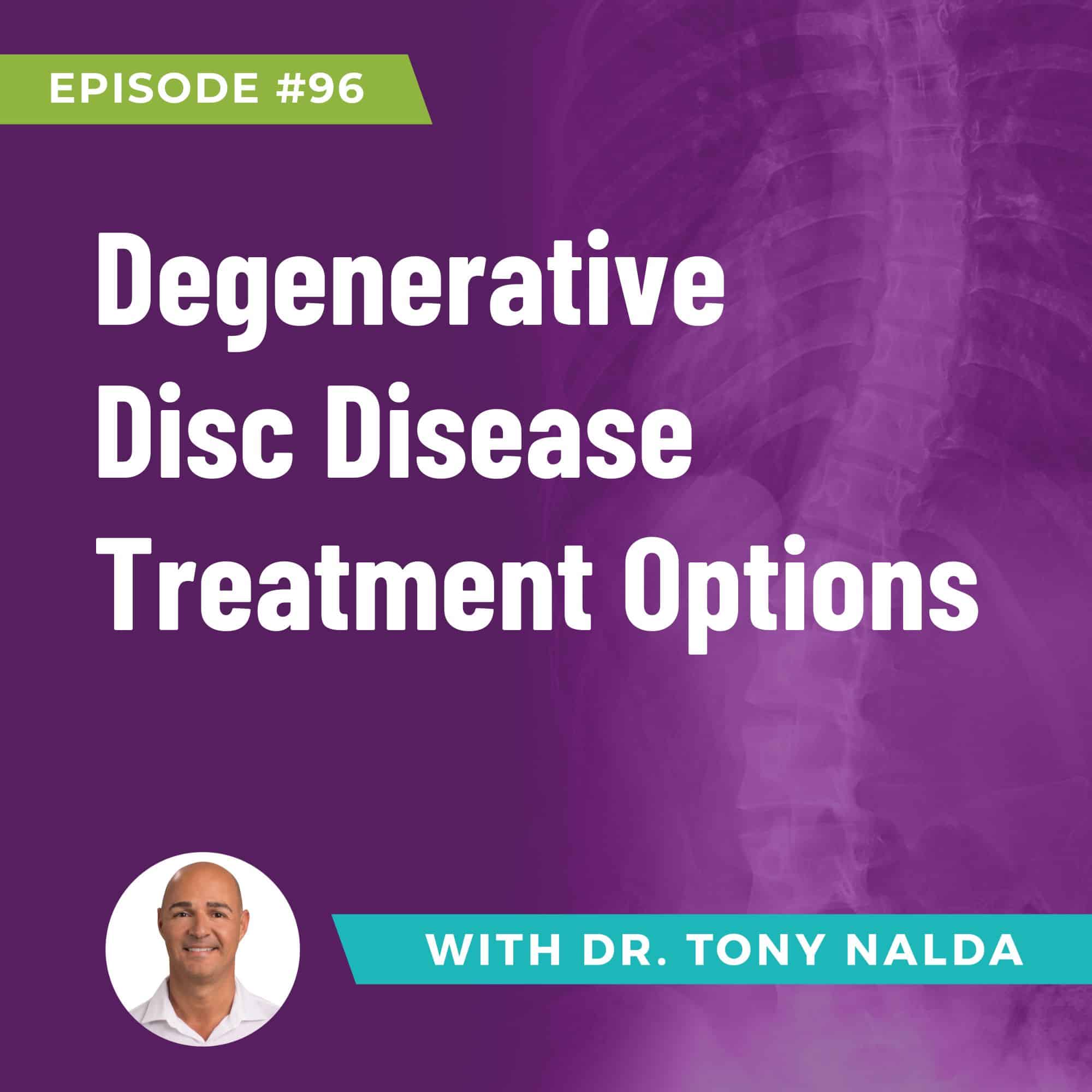Episode 96: Degenerative Disc Disease Treatment Options
When you hear the term "degenerative disc disease," it might sound like a severe condition but Dr. Tony Nalda simplifies it for us, explaining that it's not a disease you catch; it's more like wear and tear due to your spine being out of alignment.
The Basics of Spinal Structure
Your spine has 24 vertebrae stacked on top of each other, each separated by something called intervertebral discs. These discs act like spacers, providing flexibility, cushioning, and maintaining the spine's natural alignment. They have a tough outer layer called the annulus and a soft gel-like interior known as the nucleus.
Understanding Degeneration
Degenerative disc disease happens when the spine shifts out of alignment, putting abnormal pressure on one disc. This causes that specific disc to degenerate faster than usual. You can compare it to a car with misaligned tires – you wouldn't say the tire has a disease, but rather the car needs realignment to prevent further wear.
Symptoms and Development and Treatment
The common symptoms include back or neck pain, depending on where the degeneration occurs. The process involves disc desiccation, a loss of water within the disc, leading to a loss of height and neurological changes. Importantly, degeneration happens gradually over many years, and you often feel pain or discomfort after a long period of deterioration.
To treat degenerative disc disease, you need to tackle the root cause – alignment issues. It is important to address the alignment problems, often caused by injuries, spinal conditions, or lifestyle choices. Specific chiropractic care, therapy exercises, and rehabilitation can help realign the spine, preventing further degeneration.
Preserving spinal function involves positive lifestyle choices and proper ergonomics during daily activities. If you suspect or know you have disc degeneration, proactive treatment options, including evaluations and restoration of normal alignment, can be beneficial.
Understanding degenerative disc disease is the first step to effective treatment. For personalized insights and treatment options, listen to Dr. Nalda's podcast.
Podcast: Play in new window | Download
Subscribe: RSS
Dr. Tony Nalda
DOCTOR OF CHIROPRACTIC
After receiving an undergraduate degree in psychology and his Doctorate of Chiropractic from Life University, Dr. Nalda settled in Celebration, Florida and proceeded to build one of Central Florida’s most successful chiropractic clinics.
His experience with patients suffering from scoliosis, and the confusion and frustration they faced, led him to seek a specialty in scoliosis care. In 2006 he completed his Intensive Care Certification from CLEAR Institute, a leading scoliosis educational and certification center.
About Dr. Tony Nalda
 Ready to explore scoliosis treatment? Contact Us Now
Ready to explore scoliosis treatment? Contact Us Now








